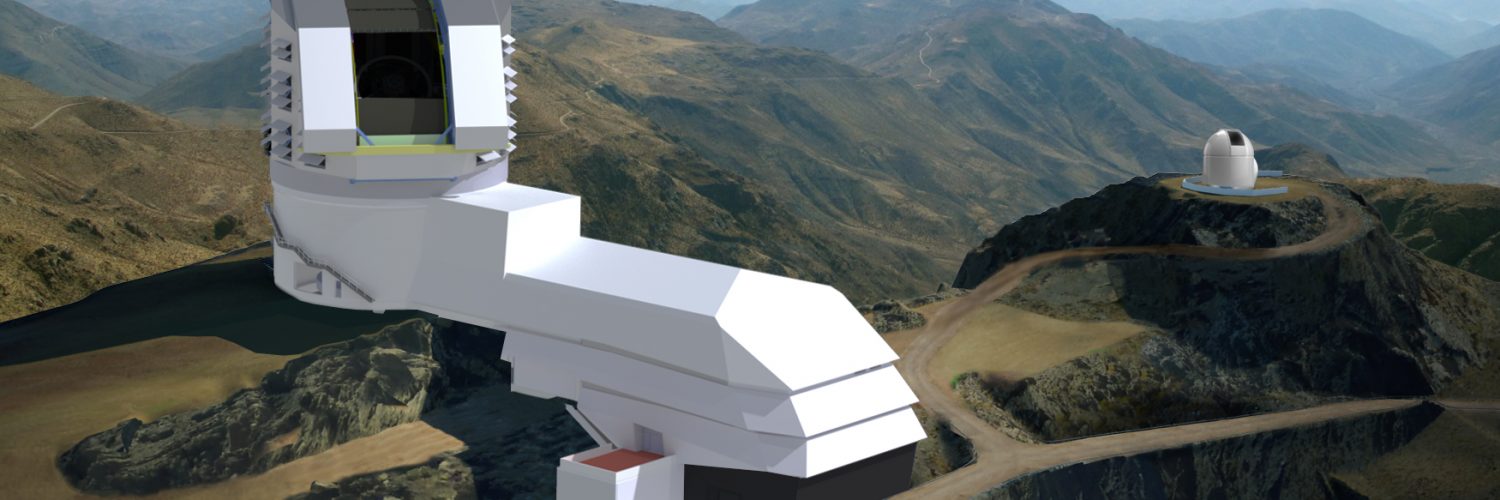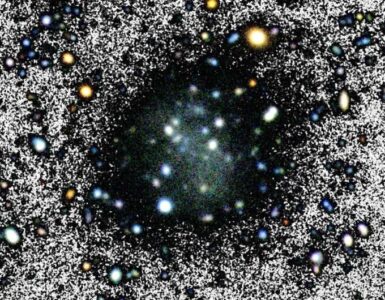by Laurenzo Overee
Think of a world where both scientific experts and members of the public will be provided equal footing with an effective data platform – able to report and broadcast discoveries made in outer space. Faint particles and objects in distant reaches of space will be successfully detected, and scientists might finally unlock the elusive secrets behind the structure and origin of the Universe. There will be no future surprise (and potentially hazardous) visitors in the form of asteroids, comets, or eccentric objects such as Oumuamua, in the Solar System.
This advanced level of technology required to support the data-intensive platform could be close to realization through the lens of a revolutionary telescope slated to conduct a decade-long survey of the night sky.
The Large Synoptic Space Telescope (LSST), which began construction in 2014 and is scheduled for completion in 2023, will far surpass existing technological limitations in space exploration and observation. The project was voted to be of high priority in the 2010 Decadal Survey conducted by the National Research Council and is being funded by United States government agencies: the National Science Foundation (NSF) & Department of Energy (DOE).
Design Features
After a careful selection process in 2003, experts decided on the elevated region of Cerro Pachon, in Northern Chile, as the most suitable site for the LSST. The base camp for the team will be situated within 100 km of the town of La Serena.
The telescope has an unmatched viewing capacity with a single exposure covering 9.62 square degrees of the night sky. The images will be captured in extremely high resolution, 3.2 gigapixels, for a wider and more detailed examination. The entire process will be conducted through the largest digital camera ever built, about the size of an SUV with lenses that are 1.55 meters (5.09 ft) in diameter.
Also of importance is the careful consideration of maintaining minimum downtime since every available moment in the night sky could provide a perspective to a unique incident or object.
The telescope will be fitted with a hydrostatic bearing system that is specially developed for elevation demands. The system will be self-aligning and resistant to seismic shocks and friction that might affect accuracy.
The components of the LSST are being simultaneously constructed in different locations. The mirrors (consisting of 8.4 meter [27.6 ft] primary, 3.4 meter [11.2 ft] convex and 5 meter [16.4 ft] tertiary mirror segments) are being fabricated in the University of Arizona Mirror Lab. The telescope itself will be manufactured in the Asturfeito facility in Aviles, Spain while its massive camera will be assembled at the SLAC National Laboratory in California. The foundation of the observatory has begun construction in its designated site in Chile.
The greatest challenge in the project, however, may arise from something less tangible: the issue of data storage. Scientists will require a massive server to store an estimated 20 terabytes worth of data per night in capturing 800 high-quality images of the sky on a nightly basis. The equipment-stacked machine rooms of the CC-IN2P3 data facility, located in Lyon, France, are being expanded to accommodate over 50 petabytes of expected data over the 10-year course of the LSST project. The team at CC-IN2P3 continues to brainstorm and prototype innovative technical solutions for the transportation, storage, and processing of data projected at the scale of LSST needs.
Data management of the LSST will be maintained through the LSST Science Platform that will consist of three user aspects that are to enable interactive exploratory analysis of collected data by researchers around the world: a web Portal, designed to provide essential data access and visualization services through a simple-to-use website, a JupyterLab environment, that will provide a Jupyter Notebook-like interface enabling next-to-the-data analysis, and an extensive set of Web APIs that the users will be able to use to remotely examine the LSST data set using tools they’re already familiar with.
Mission
According to the LSST team, there are four main missions to be achieved through the project.
First, the team intends to better understand the enigmatic dark energy that pushes the cosmos apart or captures the presence of dark matter that makes up most of the Universe. Dark matter has remained elusive due to its invisibility to light and electromagnetic radiation; however, the state-of-the-art frequency of snapping and processing the images from distant parts of space by the LSST might finally offer a glimpse into the theoretical mystery.
Second, the LSST will shed light on the trajectory of incoming asteroids, comets, and other potentially dangerous objects. The increased surveying radius into space will also expand scientific understanding of distant solar systems, explosions of supernovae, and unique traits. Scientists may potentially discover new planets, stars, and objects in distant space that are approximately10 million times more faint than what can be perceived through the naked eye.
Third, experts may learn about the transient optical sky and better study subtle changes with greater accuracy. The consistent photography of the night sky will be unprecedented.
Finally, with the voluminous data of accurate images collected, the LSST may provide new evidence to develop understanding on the evolution of the Milky Way, its structure, and even the fundamental composition of the stars within the Solar System.
The Long Wait
While it will require some time before the completion of the LSST project, scientists have already been operating numerous telescopes that push the boundaries of space observation.
The North and South Gemini Telescopes, in Hawaii and Chile respectively, detected the extrasolar planet 51 Eridani b, which was spectroscopically tested to contain the highest methane levels outside the Solar System.
Additionally, the massive twin telescopes of the Keck Observatory in Hawaii has made numerous discoveries since it began operation in 1993. Some of its forays into the frontiers of space have included the discovery of exoplanets and the ever-expanding evolution of the Universe.
What can we Expect?
According to LSST Director and Stanford University Professor, Steven Kahn, “LSST is such a new capability. It’s guaranteed to make major discoveries and major contributions — I am confident of that.”
The LSST team intends to capture 5,000,000 exposures to produce the largest astronomical catalog of images and data ever made.
Specialized software will capture and analyse data through the comparison and referencing of images from the same area of sky and notifying the global community. The entire process will take an estimated 60 seconds, from the point of detection in Chile to the analysis in the data collection center at the University of Illinois. The data will be subsequently released to optical telescope sites that are better equipped to observe individual events and anomalies.
Although the LSST is not going to be the biggest telescope ever manufactured (with the current record going to the 10.4-metre Gran Telescopio Canarias in Spain), it will provide unprecedented surveying capacity, about 50% wider than the current largest telescope.
The LSST will be fitted with state-of-the-art advancements in wide-field imaging that will capture hundreds of observations in each area of night sky. A single visit of the entire site survey with the LSST will map out 10 times more area than past surveys combined; and when these images are collated and compared, it will yield the detection of never-before-seen subtleties in the motion of stars and other cosmic events.
When completed, the project will offer data products that will be equally accessible by scientists in the US and Chile. Additionally, there will be a slew of public education outreach programs catered towards informing people about the latest sightings in space and their possible implications on Earth.
It is possible that technology will reach a point whereby laypeople will be equipped with the analytical tools and instruments to share their space discoveries and musings with the scientific communities of the world. More importantly, the population on Earth might finally become fully aware of immediate environments in outer space.










Add comment